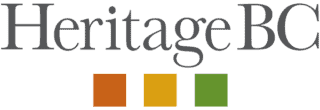- Heritage 101
- Advocacy
- Accessibility for Historic Places
- Climate & Sustainability
- Cultural Maps
- Heritage Place Conservation
- Heritage Policy & Legislation
- Homeowners
- Intangible Cultural Heritage
- Reconciliation
- Indigenous Cultural Heritage
- Setting the Bar: A Reconciliation Guide for Heritage
- 1. Heritage and Reconciliation Pledge
- 2. Acknowledging Land and People
- 3. Celebrating Days of Recognition and Commemoration
- 4. With a Commitment to Learn
- 5. Committing to Strategic Organizational Diversity
- 6. Mission-Making Room for Reconciliation
- 7. Possession, Interpretation, Repatriation and Cultural Care
- 8. Shared Decision Making
- 9. Statements of Significance and other heritage planning documents
- 10. Heritage Conservation Tools, Local Government Act
- Racism: Do Not Let the Forgetting Prevail
- Taking Action: resources for diversity and inclusion
- Webinars On-Demand
Heritage Revitalization Agreements: Process
 An HRA application can have the following simplified process:
An HRA application can have the following simplified process:
- preliminary inquiry
- pre-application review
- application
- community and committee review
- consideration of bylaws
The following proposes a more detailed schedule (although dependent on each situation and local requirements):
- Local government or the property owner identifies the need for the use of a heritage revitalization agreement (HRA) that could be used to in a particular situation. The need may arise from the unusual siting of a building, a unique lot configuration or other unique circumstances.
- This phase includes the assessment of heritage qualities in order to meet eligibility requirements.
- This phase also determines the appropriateness of HRA versus heritage conservation covenant (see guide for more information).
- Local government and the property owner negotiate the proposed form of development and the terms of the HRA, including the obligations, duties, and benefits of the agreement.
- Local government seeks legal advice and drafts the HRA and the corresponding bylaw.
- The owner submits a development application and /or subdivision application and financial analysis which are reviewed by staff and if supported, approval is subject to Council enacting the HRA Bylaw.
- The application is reviewed for zoning, building code, site servicing, fire aspects, etc.
- If the use or density of the property is proposed to be changed, a public hearing must be held. Refer to the Local Government Act for public hearing requirements.
- Community Heritage Commission, relevant Neighbourhood Associations, the Advisory Planning Commission, the Design Panel and immediate neighbours may be consulted during this process.
- Council or regional district board adopts the bylaw.
- Within 30 days of the adoption of the bylaw, local government files a notice in the Land Title Office to register the heritage revitalization agreement on the property title. Local government must also notify the minister responsible for the Heritage Conservation Act (the Heritage Branch).
- The project phase will include requirements as specified by the local government. These may include (but not limited to):
- Submission of building permit drawings
- Formal review by City departments
- Heritage Alteration Permit
- Regular updates on work progress
- Site visits by local government staff
- A heritage revitalization agreement may only be altered with the consent of the property owner and local government. Local government must adopt a bylaw to amend a heritage revitalization agreement.
- At completion, a site review is conducted, and the project is signed off.
The City of New Westminster offers the following list for the application process (the list may vary according to each situation):
- Application Form
- Application Fee
- Letter of Authorization from property owner, if applicable
- Land Title Certificate indicating current ownership
- Site survey (certified) showing location of building, height of building, corners of site, plus other elements as required
- Statement of Significance (by professional other than project architect)
- Heritage Conservation Plan detailing conservation work (this may be written by the project architect)
- Design rationale
- 11×17” architectural drawings of the proposed project, drawn to ¼” scale. Must include a site plan, exterior elevations, cross sections, floor plans, geodetic elevations of all floors.
- Proposed materials should be indicated on the exterior elevations. Parking on-site must show stall dimensions, drive and manoeuvring aisles, drive-way slopes and turning radii
- Landscape plan to scale showing number, type and size of plant material proposed, plus the proposed treatment of other surfaces of the site, and the proposed treatment of the street boulevard and driveway crossing
- Plans must also include a statistical table of the proposal covering all of the conditions of use for the applicable zoning district, plus the variances being requested. The table must include required/permitted and proposed yards and setbacks, density, floor space ratio, site coverage, height, parking and loading requirements, balcony and open space dimensions and areas, housing unit types and areas, and areas set aside for common areas (if applicable) should also be noted. Any bylaw deficiencies should be noted
- Current photos of building (all elevations), also of the site and surrounding properties
- Colour and material board
(source)
